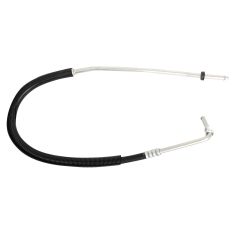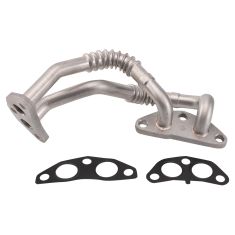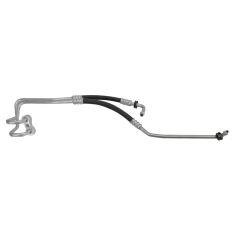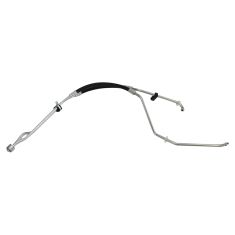Oil Cooler & Lines - Engine
-
-
- Air Deflectors & Valance Panels
- Battery Trays & Related
- Body Panels
- Bumpers & Related - Front & Rear
- Convertible Tops, Soft Tops, & Parts
- Decal & Stripe Kits
- Emblems & Nameplates
- Engine Compartment Trim
- Frame Parts & Bushings
- Fuel Door Parts
- Fuel Tank Filler Neck
- Grille
- Header Panel
- Hood & Hatch Lift Supports
- Hood Latch & Catch Brackets
- Hood Release Cable
- Jack Pads
- Radiator Supports
- Rust Repair Panels
- Splash Shields & Fender Liners
- Tailgate Cables
- Tailgate Hinges & Related
- Weatherstripping
-
- Car Covers
- Exterior Lighting
- Exterior Parts & Accessories
- Exterior Safety & Security
- Exterior Storage
- Fender Flares
- License Plate Brackets & Frames
- Mud Flaps & Splash Guards
- Nerf Bars, Side Steps, Running Boards
- Radio Antenna
- Rain Deflectors
- Roll Bars, Light Bars, & Related
- Roof Rack
- Skid Plates
- Spare Tire Carriers & Related
- Spare Tire Covers
- Tire Care
- Tonneau Covers
- Tow Hooks & D-Shackles
- Towing Accessories
- Trailer Hitch & Components
-
- Accelerator Pedal Pad
- Auto Carpet
- Brake Pedal Pad
- Clutch Pedal Pad
- Console Parts
- Dash Pad Cover
- Dash Vents
- Floor Mats & Liners
- Horns & Horn Parts
- Interior Parts & Accessories
- Mirror - Interior Rear View
- Seat Cover and Sets
- Seat Heater Kits
- Seat Parts and Accessories
- Sun Visors & Related
- Trunk & Cargo Parts
-
- Accelerator Pedals & Sensors
- Alarms, Control Modules, & Remote Start
- Cruise Control Switch & Lever
- Electrical Parts
- Hazard Switch
- Ignition Key Lock Cylinder
- Ignition Switch
- Keyless Entry Remote & Related
- Neutral Safety Switch
- Parking Assist Cameras & Monitors
- Power Mirror Switch
- Power Seat Switches
- Power Window Switch
- Radio, Navigation, Entertainment
- Reverse Light Switch
- Trunk Release & Lock Solenoids
- Turn Signal Switches and Levers
- Windshield Wiper Switch
-
- Idler Arm
- Pitman Arm
- Power Steering Hoses
- Power Steering Oil Cooler
- Power Steering Pressure Sensor
- Power Steering Pump
- Power Steering Pump Cooling Fan
- Power Steering Pump Pulley
- Power Steering Pump Reservoir
- Steering Dampers
- Steering Knuckles and Spindles
- Steering Rack and Gear Boxes
- Steering Shafts & Couplers
- Steering Wheels & Column Parts
- Tie Rods & Adjusting Sleeves
-
-
-
-
53
6
10
10
-
Notify When Available
Replaces 2011-13 Jeep Dodge Chrysler Oil Filter Housing & Cooler Assembly TRQ ECA92434
Brand: TRQ - ECA92434$139.95Save 25%List $186.95 Save $47.00Brand: TRQ - ECA92434$139.95Save 25%List $186.95 Save $47.00 -
Notify When Available
Replaces Chevrolet Pontiac Saturn Oil Filter Housing & Cooler Assembly TRQ ECA92767
Brand: TRQ - ECA92767$74.95Save 31%List $107.95 Save $33.00Brand: TRQ - ECA92767$74.95Save 31%List $107.95 Save $33.00 -
Notify When Available
Replaces Chevrolet GMC Cadillac Outlet (Lower) Engine Oil Cooler Hose Assembly TRQ ECA62406
Brand: TRQ - ECA62406$41.95Save 32%List $61.95 Save $20.00Brand: TRQ - ECA62406$41.95Save 32%List $61.95 Save $20.00 -
Notify When Available
Replaces Chevrolet GMC Cadillac Inlet (Upper) Engine Oil Cooler Hose Assembly TRQ ECA62404
Brand: TRQ - ECA62404$45.95Save 32%List $67.95 Save $22.00Brand: TRQ - ECA62404$45.95Save 32%List $67.95 Save $22.00 -
Notify When Available
Replaces Chevrolet GMC Cadillac Inlet & Outlet Engine Oil Cooler Hose Assembly TRQ ECA62413
Brand: TRQ - ECA62413$94.95Save 26%List $128.95 Save $34.00Brand: TRQ - ECA62413$94.95Save 26%List $128.95 Save $34.00 -
Notify When Available$57.95Save 30%List $82.95 Save $25.00Brand: TRQ - ECA92311$57.95Save 30%List $82.95 Save $25.00
-
Notify When Available
Replaces Chevrolet GMC Olds Inlet and Outlet Assembly From Oil Filter to Radiator Engine Oil Cooler Hose Assembly TRQ ECA62403
Brand: TRQ - ECA62403$54.95Save 30%List $77.95 Save $23.00Brand: TRQ - ECA62403$54.95Save 30%List $77.95 Save $23.00 -
Notify When Available
Replaces Chevrolet GMC Inlet and Outlet Assembly From Oil Filter to Radiator Engine Oil Cooler Hose Assembly TRQ ECA62401
Brand: TRQ - ECA62401$64.95Save 30%List $92.95 Save $28.00Brand: TRQ - ECA62401$64.95Save 30%List $92.95 Save $28.00 -
Notify When Available$49.95Save 30%List $70.95 Save $21.00Brand: TRQ - ECA92433$49.95Save 30%List $70.95 Save $21.00
-
Notify When Available
Replaces Ford Lincoln Inlet & Outlet Engine Oil Cooler Hose Assembly TRQ ECA62416
Brand: TRQ - ECA62416$134.95Save 34%List $204.95 Save $70.00Brand: TRQ - ECA62416$134.95Save 34%List $204.95 Save $70.00
loading...
Choose the Make of Your Vehicle











